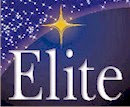 |
| Dan Crowder, TCB Supervisor |
C63.10-2013 was released back in September and has received
quite a bit of praise – but it has some caused some controversy as well.
The purpose of C63.10 was to put all the test methods for
unlicensed transmitters into one document. The first version of the standard
was released in 2009 and included what was considered to be
“non-confrontational” test methods. The standard was adopted by the FCC and
Industry Canada for the testing of unlicensed transmitters. Four years later,
version two has been released and includes the so called “confrontational” test
methods.
The standard covers every type of transmitters that fall
into the unlicensed category. The test methods have been gathered from a
multitude of resources including the FCC, Industry Canada, manufactures, test
laboratories and certification bodies from around the world. Very detailed instructions have been provided
for some very complicated transmitters including digital transmission systems
that include transmitter power control and dynamic frequency selection. These
procedures were only published in various FCC knowledge database documents that
were sometimes tedious to dig up.
Another useful tool is a reference table included in Annex
A. The table steps through the FCC Part 15 rules one by one and
cross-references sub-clauses in the standard to point out specific tests that
pertain to the specific rule part.
This standard along with C63.4 can be used as test methods
for almost every unlicensed transmitter.
As a test laboratory, you should lookout for procedures that
have not been adopted by the regulating bodies. One that stands out in my eyes
is the formula for distance correction factor for frequencies below 30MHz.
Overall, C63.10-2013 is a huge improvement over any previous
document or documents for test procedures for unlicensed transmitters.
Do you have any questions about transmitter standards, certification, or other related topics? Please share your comments or questions below and our expert, Dan Crowder, will get back to you.













